Class XIII – Session 5 – HOUSTON/GULF COAST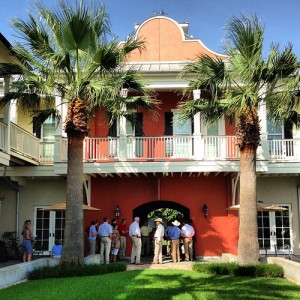
Photos by: Lindsay Kennedy
Tuesday July 23, 2013
Scott’s Miracle-Gro – Southwest Region
Jim Tate – President – welcome
Today we will be exposed to a message on Urban ag. Relationships matter. TALL is an opportunity to connect to other people. We all share common issues.
Michael Sutterer – VP of Regional Marketing for North and Latin America
Michael has been with Scotts for over 13 years. 2.8 billion in worldwide sales with more than 6000 global associates – but they operate primarily in North America, along with businesses in Europe and Asia Pacific. Their vision: To help people of all ages express themselves on their own piece of the Earth. Focused on younger consumers – indoor gardening – Hispanics – all in hopes of broadening their view of today’s consumer. Several brands – Scotts – Miracle-Gro – Ortho – Roundup. They are also a leader in lawn service.
Besides brands Michael really feels the company focuses on its employees – recognized by Forbes as one of the Best Big Companies. They work on fit programs and education. Scotts prides itself in the strong relationships with its retail partners –Home Depot and Lowes. But nothing is more important than the consumer. Heritage built on paying attention to who the consumer is and what they need. OM Scott was a civil war veteran and shop keeper that started it all – believed farmers should have clean wheat fields. Horance Hagedorn was a marketing genius – wanted to simplify gardening – expand production. He applied Madison Avenue wizardry to the plant food named Miracle Gro – sold it to just about every one of the post war suburbanites who yearned for a green thumb.
They take to heart the words: find a need and fill it. They support public green spaces and community gardens – help underserved youth through opportunities that promote self-reliance – support health and wellness initiatives. Regionalization contributes to their success – understand the area and its specific needs – get closer to the consumer. Texas is the most important state for their business – #1 in all categories (fertilizers, soils, mulch, and herbicides).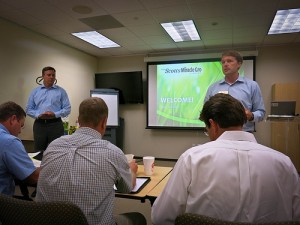
Michael Shelton – Scotts Sustainability/Regulatory Issues Facing Our Company and Industry
Michael is more from the non-profit – environmental side. The initiative is to develop products that are sustainable – reduce environmental footprints. Chesapeake Bay is an ongoing water quality action – concern about residential fertilizer runoff into the bay. Scotts worked to develop products with lower phosphorus. Met their goals – P free. Worked to communicate with the consumer – a proactive integrated approach in their marketing – labeling – outreach & education. Healthy grass – reduces runoff – soil erosion – nutrient losses and increases recharge. Scotts is the largest natural & organic marketer. Scott owns Round Up exclusively. Scott is the largest recycler of green waste – tree clippings – rice hulls – utilized in mulch.
2018 is Company’s 150th anniversary. All environmental goals are targeted for completion in 2018. 20% reduction in Green House Gas emission is the goal – currently at 5%. Community: establish 1000 community gardens and greenspaces by 2018 – GRO 1000 – a large grant program. GroGood is the company’s responsibility to environmental sustainability, gardening and green spaces, philanthropy, and commitment to the community.
Stephanie Pizzoferrato – Texas Water Smart Public-Private Partnership
One of the members of the government affairs team – Stephanie works to protect business from regulatory issues that hinder their business. Texas Water Smart is a public-private coalition – formed to defend our freedom to operate. Now 50 plus corporations and 150 elected officials. Campaign to educate the consumer – get people to take action – reduce their consumption by 10%. Texans take pride in being part of the solution. Todd Staples has been an incredible spokesperson for water conservation. Communication objectives: educate residents – drive behavior change – simple low/no cost steps – complement existing programs. Results – 92% of Texans support water conservation – 81% of consumers used less and met 10% water reduction goal – water stayed “on”. Legislative: lobbyist focused on water – first ever potential state funding for water conservation (1 Mil) – water smart looking to tap into funding source – SMG continuing to solidify relationships with state and local policy makers. State water plan will be up for vote in November.
Jason Nichol – VP Sales – Consumer Insights & Research and Development in Lawn and Garden
Innovation starts with consumer. Today’s generation thinks differently – different needs. Major innovation in grass seeds and fertilizers – make it easy and foolproof for consumers. Miracle Gro potting mix grows product 8 times more – advertise 2 times more – over delivering – happy consumers. Newest product – SNAP – just put the bag on the spreader – flip the switch – never touch the fertilizer – product is delivered at just the right amount. Innovation critical – simple – sustainable – significant. Consumer first focus – less water – easier – performance – health – and now product must perform in smaller spaces. Scott has major investment in R&D. New area for Scotts is live MiracleGro branded plants.
Strong relationships with home center retailers, hardware, and independent garden centers and nurseries. Walmart is #1 – Lowes – Home Depot – Kroger some of the largest partners. All SMG products produced in America.
Mark Harris – Owner of Harris Landscaping – Overview of Texas Nursery & Landscape Association and the green industry in Texas
This industry produces our oxygen. Besides the live plants this industry includes equipment, irrigation, pots/containers, fertilizers, hand tools, pavers, stonework, fencing, design software, seeds, and Christmas lighting. Key partners are landscape designers and architects. Horticulture 79.8 billion in grower sales with Texas at 2.47 billion in sales. In Texas total industry sales were 15.6 billion in sales with largest increase in lawn and garden. Total jobs in Texas 200,300. This industry faces many challenges – water – labor – regulatory issues – transportation – taxes – fertilizer use – invasive species – pest and disease issues – container size and labeling – product margins. Opportunities – young people taking leadership roles – more Hispanic participation. This industry has a $15.5 billion economic impact on the economy.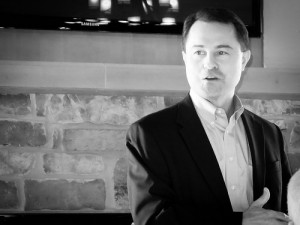
Scotts Miracle-Gro sponsored an amazing evening at The Woodlands Country Club Tournament Course. The evening was fun and educational. Two of the highlights were speakers Honorable Todd Staples; Texas Commissioner of Agriculture and Dr. Lloyd B. Potter; Texas State Demographer.
Wednesday – July 24, 2013
Glueck Family Farm
This day started off with Mickey Glueck’s delicious home baked kolaches. 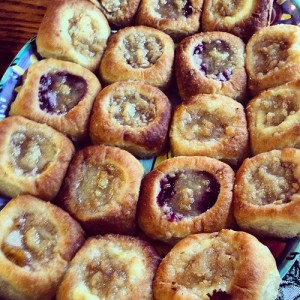 Really awesome!!
Really awesome!!
Glueck farm is a true family operation- originally farmed peanuts – now a tree farm – mostly oaks in containers. Business is good because construction is good again. Water is major issue – not on the farm – but on the actual site – no water – can’t plant the tree. They do go thru brokers – not business people – not marketing people – so they let others handle their sales. Mr. & Mrs. Glueck started the business – now sons are running the business. Employee about 12 to 14 full time employees. Total 200,000 to 250,000 total trees on site. Every tree is tied up to a cable system. High winds can break the heads off the tree – wind is the worst natural element for trees. Fall is the busiest shipping season – but sales are fairly consistent all year. Jeff credits the brokers for this consistency of sales. Houston, Austin, San Antonio biggest area for sales – never shipped out of the state.
Rice-Tec
RiceTec, owned by Prince Hans-Adam of Liechtenstein – mission to feed the world – felt rice was the commodity to do that. RiceTec is a technology-based seed enterprise that produces and markets high-quality hybrid rice products. Years of breeding programs have led to the development of hybrid seeds that give the producer high grain yield, more disease resistance, and higher grain quality. Rice-Tec has single handedly moved rice production from 25 barrels 30 years ago to 60-70 barrels now. RiceTec is the market leader in the USA, and also produces and markets seed in South America and India.
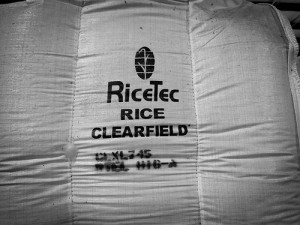 RiceTec also operates a consumer business in the USA, marketing aromatic speciality rices (e.g. basmati, jasmine, risotto) under the Rice Select brand – the Tex-Mati label. No formal advertising – if you like it – tell 10 people – if you don’t – keep it to yourself.
RiceTec also operates a consumer business in the USA, marketing aromatic speciality rices (e.g. basmati, jasmine, risotto) under the Rice Select brand – the Tex-Mati label. No formal advertising – if you like it – tell 10 people – if you don’t – keep it to yourself.
It cost about $1000 an acre to grow rice now – fuel, water, fertilizer, herbicide, seed – includes trucking, milling, drying. Hogs are major problem. Farmers do rotate crops – cattle move in right after rice harvest – a volunteer crop will come back after 1st harvest that will be ready in October. Still 18,000 acres of rice in Brazoria County. Water is tough – Colorado River Authority has cut farmers off for second rice crop – trying to cut farmers off completely. There has been a loss of about 30,000 acres of rice due to LCRA cutting farmers from water. Water wells are really not an option – water just not available.
Gertson Farms
Grows about 3000 acres of rice – soil perfect for rice. This year farming 1700 acres – all on ground water. Also started a flying service – currently running only 1 plane – insurance $50,000 on each plane. Trying new products – working on custom water control structures. Also slotting pipe for surface irrigation – typical rice well produces 30,000 gallons a minute. They have their own storage facilities. Great example of farm diversification – many things in addition to farming rice.
A custom ground spraying operation – hay production – Brahman cattle. They sell around 300,000 square bales – biggest customer HLSR. Brother owns Navasota Auction Barn – receiving pens on the ranch. Part of Hudgens Brahman family. They try to bale about 5000 bales a day. Use some flood irrigation on their Alicia coastal – flood the fields like rice.
 First Hudgens came in 1839 – Mississippi – then moved to Hungerford, Texas. Josiah Hudgens – JD Hudgens formed the partnership that continues today. The Hudgens have now incorporated – set up partnerships owned by different members of the family. They do show and sale cattle together – but all livestock carries the Hudgens brand and also the family’s brand. Ranch today is 15,000 acres. 1750 Brahman females – sold to 35 states and 43 countries of the world. When we had the BSE outbreak – all countries stopped buying livestock – now Mexico and Central America have resumed business. Hudgens first exported cattle in 1933 to Australia. Even though they are not shipping live cattle, they still sell semen and some embryos. Bulls are fed Purina Accu-Ration – something to eat 24 hours a day. They run two calving seasons – Spring is March to May – Fall is the end of Aug to October. Spring runs 75 days and the Fall runs 60 days. Manso is the bull that changed the dynamics of the Brahman breed and started it all for the Hudgens.
First Hudgens came in 1839 – Mississippi – then moved to Hungerford, Texas. Josiah Hudgens – JD Hudgens formed the partnership that continues today. The Hudgens have now incorporated – set up partnerships owned by different members of the family. They do show and sale cattle together – but all livestock carries the Hudgens brand and also the family’s brand. Ranch today is 15,000 acres. 1750 Brahman females – sold to 35 states and 43 countries of the world. When we had the BSE outbreak – all countries stopped buying livestock – now Mexico and Central America have resumed business. Hudgens first exported cattle in 1933 to Australia. Even though they are not shipping live cattle, they still sell semen and some embryos. Bulls are fed Purina Accu-Ration – something to eat 24 hours a day. They run two calving seasons – Spring is March to May – Fall is the end of Aug to October. Spring runs 75 days and the Fall runs 60 days. Manso is the bull that changed the dynamics of the Brahman breed and started it all for the Hudgens.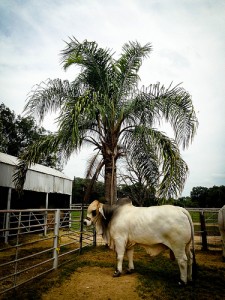
Penner Fish Farm
Cat fish farm – fish operations are growing in this area. We toured a channel cat fish production site. Was about 700 million pound business – now 300 million pound business because someone sent Channel Cat fish to China. Fish that are imported are not really tested for anything. US fish ponds stocked and fed with pelleted feed that floats – blow feed over the water late in the evening. When cat fish are harvested – taken live – big net – corrals fish into a corner – leave them for about an hour and they grade themselves. Loaded live – trucks have tanks – hauled live – harvested and bagged – at supermarket or restaurant fresh within hours. Ponds are fresh water – fish will bury themselves in the mud and escape the nets. Only feedmill in Texas – Angelton. Biggest expenses – feed and electricity. Predators – birds and snakes. 8 to 9 months to grow channel cat fish to size for harvest. Have to check oxygen levels in water before sunrise – every day.
Prasek’s Hillje Smokehouse in El Campo is famous for smoked and dried meats, a fresh bakery, a specialty meat market, a full deli and convenience items. The store is amazing with the Wooden Floor gift shop and an ice cream parlor. In addition, they have a huge line of wines and other smoked specialty items. But it does not stop there. They also sell outdoor fire pits, grills, hunting gear, deer stands, and fishing gear.
The Cattleman’s Night Social was very nice. As a cattle producer, I am always happy to see our industry involved. Dr. Graham is truly amazing so it was a privilege to have an opportunity to speak with him. Not to mention, the steaks that he provided for dinner for fabulous!! Perfect!! I was also glad to hear words from Dr. Thorpe – Texas & Southwestern Cattle Raisers Association.
Thursday July 25, 2013
Texas International Terminals
We were welcomed by Mr. Gerald Sullivan – owner of Santa Rosa Ranch.
Todd Sullivan – President
 Ag and mari-time very connected. Sullivan family native to Galveston – only 50000 people – if not in tourism you are involved with marine. Mr. Sullivan grew up ranching on the island – his father managed cattle for wealthy families – always involved in ranching. The Port of Galveston is the money maker for the island. The biggest business in the world is not energy – it is feeding people. Agriculture and all components connected to ag make up this massive business. Ag requires efficiency at all levels. Galveston was first port west of Mississippi. All the railroads came to Galveston – still come to Galveston. Handles commodities – wheat, rice. Big business in RoRo – roll on roll off. Since 2011 – Port of Galveston shipped over 60,000 head of cattle to Soviet Union. There are 27 municipal docks and then there are private docks that mostly handle grain to rail cars. Galveston also has its own ship building dock.
Ag and mari-time very connected. Sullivan family native to Galveston – only 50000 people – if not in tourism you are involved with marine. Mr. Sullivan grew up ranching on the island – his father managed cattle for wealthy families – always involved in ranching. The Port of Galveston is the money maker for the island. The biggest business in the world is not energy – it is feeding people. Agriculture and all components connected to ag make up this massive business. Ag requires efficiency at all levels. Galveston was first port west of Mississippi. All the railroads came to Galveston – still come to Galveston. Handles commodities – wheat, rice. Big business in RoRo – roll on roll off. Since 2011 – Port of Galveston shipped over 60,000 head of cattle to Soviet Union. There are 27 municipal docks and then there are private docks that mostly handle grain to rail cars. Galveston also has its own ship building dock.
There are three land owners – Port of Galveston – Mosiac Fertilizer – Sullivans. They handle 11 different commodities – nitrogen (BSAF) – ammonia sulfate – domestic commodities. The Sullivans handle ammonia sulfate; not ammonia nitrate (the explosive aspect of fertilizer).
Texas International Terminals handle liquid transloading and bulk storage – and dry bulk handling and trans-shipment. Dakota boom is biggest part of the business currently with rail cars bringing in crude oil – pumped into tanks for storage – then pumped out into barges.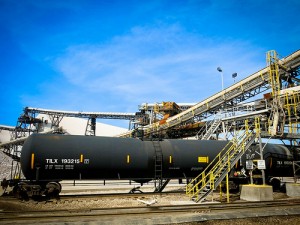
Handle tons of dry good a year. Material to drill wells. They can handle one ship at this time – seeking permit to expand to 3 berths for 3 ships. Panomax – 738 ft in length – maximum size – goes thru Panama Canal.
Maintenance – labor – fuel – biggest expense. Weights upon arrival – tick marks that show how far a vessel comes out of the water made by a marine surveyor – but they have scales to verify. Of course, there is always the threat of a hurricane, but they have a hurricane response plan.
What an amazing operation run by a truly amazing family!!
Boarded the Seagull for tour of Port of Galveston and Galveston Ship Channel.
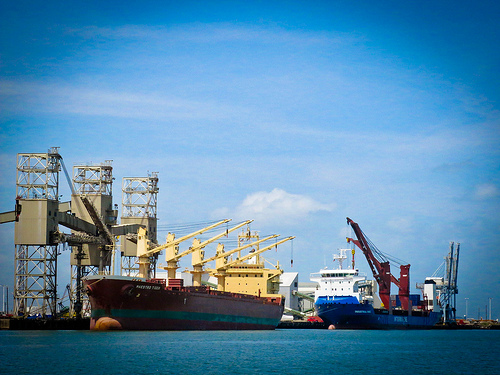 Banana dock was first point of interest where tons of bananas are unloaded every year. Then we saw a massive multi story ship built like a parking garage on the inside – Roll on roll off – John Deere and Cat equipment being “rolled off”. Galveston has 400 boat slips – including a dry boat facility built after the hurricane. University of Tex medical branch is just off the channel with the 1889 building still standing – currently 12000 employees. From one end of the port to the other – agriculture. Can get into Galveston within 45 minutes – takes 4 to 5 hours to go into Port of Houston – costs more. Water is fresher in channel. The container ships are now computerized to know which containers need to come off first. Oil field museum – Ocean Star – ocean drilling rig. Bay shrimpers docked behind the Ocean Star. #4 port in the country for cruise ships – Carnival – Royal Caribbean – Disney. The port has a filling station for ships – could be the 5 million dollar fill up. Cargo is always evolving – like shipping the massive wind mill blades – perfected 2 rail cars to deliver blades on land. Ship loads of fertilizer. Ships for research – Nautilus research ship owned by A&M in port – just finished a project. Mountains of sulfur – liquefied with steam – pumped off into ships. Southwest shipyard builds ships – inside – very successful. Dredge boat – sucking up mud off the bottom to keep channel a certain depth. A jack up rig sits idle – obsolete – will be broken up and scraped for steel. Port is major economic engine – really a well kept secret.
Banana dock was first point of interest where tons of bananas are unloaded every year. Then we saw a massive multi story ship built like a parking garage on the inside – Roll on roll off – John Deere and Cat equipment being “rolled off”. Galveston has 400 boat slips – including a dry boat facility built after the hurricane. University of Tex medical branch is just off the channel with the 1889 building still standing – currently 12000 employees. From one end of the port to the other – agriculture. Can get into Galveston within 45 minutes – takes 4 to 5 hours to go into Port of Houston – costs more. Water is fresher in channel. The container ships are now computerized to know which containers need to come off first. Oil field museum – Ocean Star – ocean drilling rig. Bay shrimpers docked behind the Ocean Star. #4 port in the country for cruise ships – Carnival – Royal Caribbean – Disney. The port has a filling station for ships – could be the 5 million dollar fill up. Cargo is always evolving – like shipping the massive wind mill blades – perfected 2 rail cars to deliver blades on land. Ship loads of fertilizer. Ships for research – Nautilus research ship owned by A&M in port – just finished a project. Mountains of sulfur – liquefied with steam – pumped off into ships. Southwest shipyard builds ships – inside – very successful. Dredge boat – sucking up mud off the bottom to keep channel a certain depth. A jack up rig sits idle – obsolete – will be broken up and scraped for steel. Port is major economic engine – really a well kept secret.
John Mierzwa – Port of Galveston Director and John Peterlin – Senior Director of Marketing and Administration, Port of Galveston
Galveston is one of the oldest ports – wall street of the South. Hundreds of millions of dollars of economic influence – 3.1 billion to Texas – 13,000 jobs. Easy access. Dredged to 1200 feet. One of the top 50 ports in the nation. 6.7 million short tons of cargo a year – livestock, fertilizer. Import and export opportunities – including live cattle shipments. Texas Cruise port – 5th busiest cruise port. Invested 65 million in cruise port facilities. 1.5 million passengers a year. Security is paramount.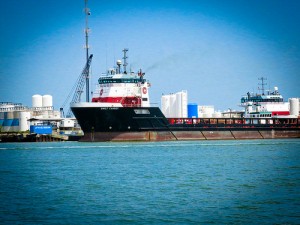
Galveston is known for its historic district – beautiful old homes. Actively looking to expand the port – building more storage facilities. Galveston – gateway to the Gulf. Major arrivals of fruit – bananas, pineapple. Grain exports- wheat, a little soybean. Fertilizer is major element of port business.
Cruise ship for cattle – bred heifers – Angus, Hereford – gong to Russia. Also shipping some horses. Feed and water have to be stored to care for them – need to gain on the way over. Warehouse that is under cover – cattle moved in – stock comes off the truck – ear tags are read with hand held computer – cowboys on horses in warehouse – 5 hours of rest after unloaded off the trucks –stalls have ventilators, feed, water, shavings – 3 weeks to get to Russia – 2500 to 5000 head shipped at a time. Annually 60,000 head moved out.
Rear Admiral Robert Smith III – President and Chief Executive Officer, Texas A&M University Galveston
1900 storm – probably 10000 casualties– one of the worst disasters in Texas. 6 million tons of animals and animal products move thru this port – 2 million tons of vegetables. 25% of all fuels refined are in this area. Galveston is not below sea level. Economy and defense work hand in hand. Can’t have a strong economy without strong defense. 12.5 miles off coast – Texas being a sovereign nation – still has right to drill off its shore.
Dr. Bill McClain – 90% of world trade is water borne. 70 % of the earth’s surface is covered by water. 60 % of food supply comes from the sea. Houston/Galveston – largest petrochemical manufacturing area in the world – leading center for building oilfield equipment – home to more than 3000 energy related companies. Port of Houston 25 miles in length – serves more than 8000 ships annually.
Texas A&M Galveston – floating classrooms and labs with direct access to the ocean and Galveston Bay. Home of the Texas Maritime Academy. Seafood safety, coastal geology, wetlands restoration, impact of oil spill on Kemps Ridley turtles, underwater cave exploration. Texas is a coastal state – this facility provides service and education.
The Ike Dike – a coastal barrier protecting the Houston Galveston region. Concern of people, environment, economy, property. The Ike Dike strategy is a strategy to create a wall and storm surge gates. Only needs to hold a maximum surge for a few hours. It will protect the bay’s resources and people. A coastal pine suppresses surge.
Our last stop in Galveston was Evia – a development by the Sullivan family. Kelley was the predominant force behind this development and she did a remarkable job. Kelley is herself – remarkable. To meet her family was such a treat – what a wonderful family – each one brilliant – and every one engaging and warm. The Sullivan family is one of the all time best success stories.
Last on our Houston itinerary was our ride-along with a Houston police office. My officer was George Potter. It was an evening to remember. George is one of Houston’s very finest – doing a tough job in a tough neighborhood. George knows what he is doing – attentive – skilled – loves his fellow officers – and cares about the people that he encounters on his beat. I witnessed great bravery – camaraderie – a sense of duty – but also heart. George has a very busy beat. I show George and other officers in action – lights and sirens the entire night – that ended in a drug deal gone bad with one murdered and 2 more shot and hospitalized. For these officers it was all in a night’s work – for me, it was the experience of a lifetime.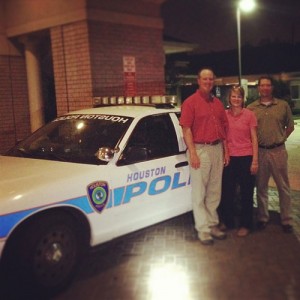

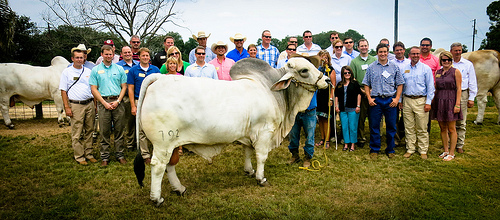

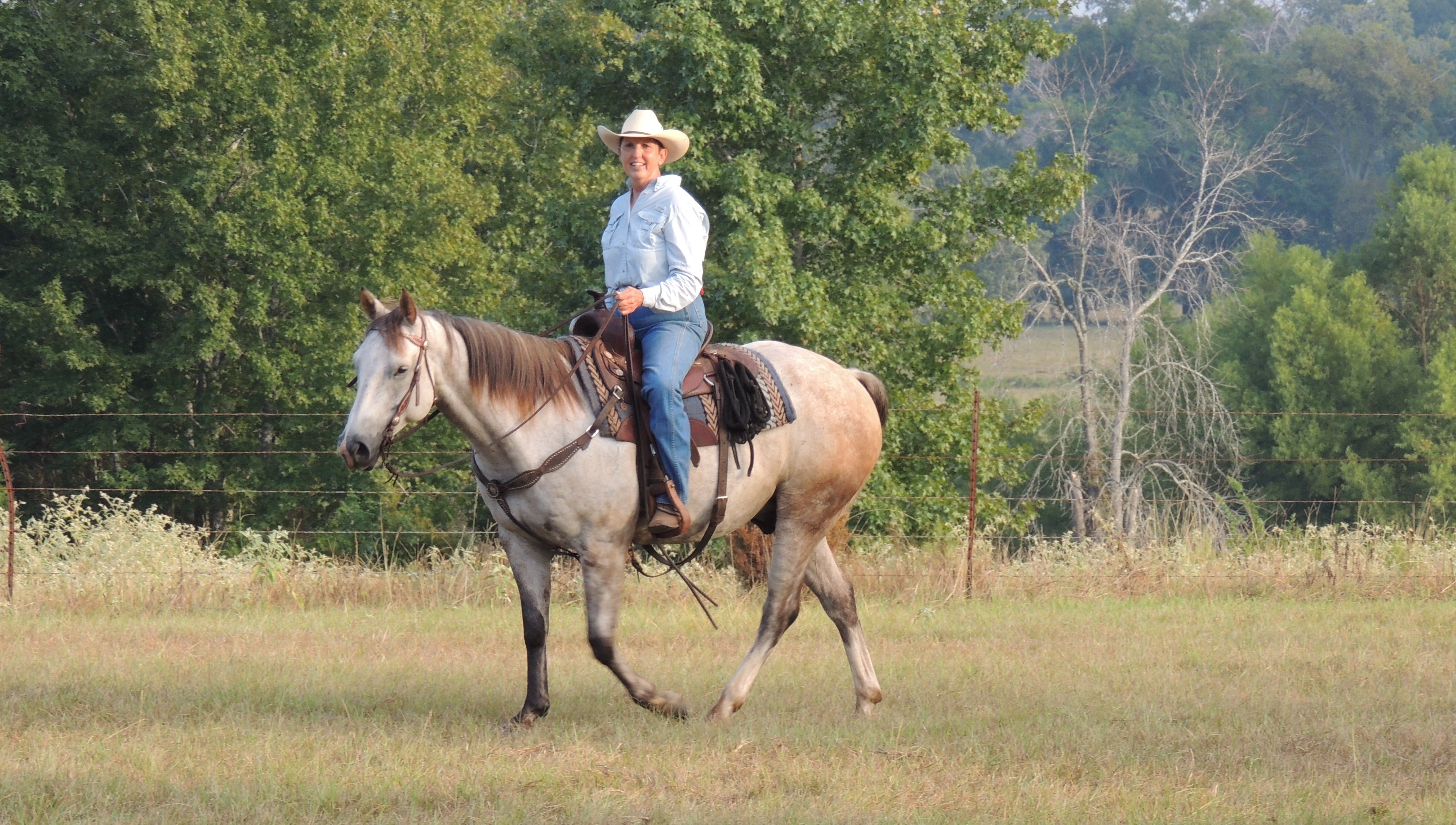
Get Social